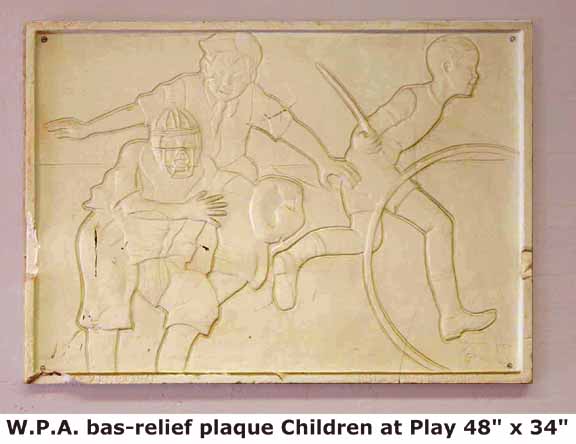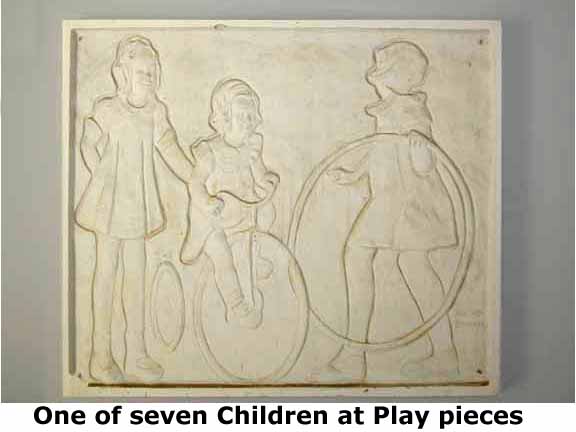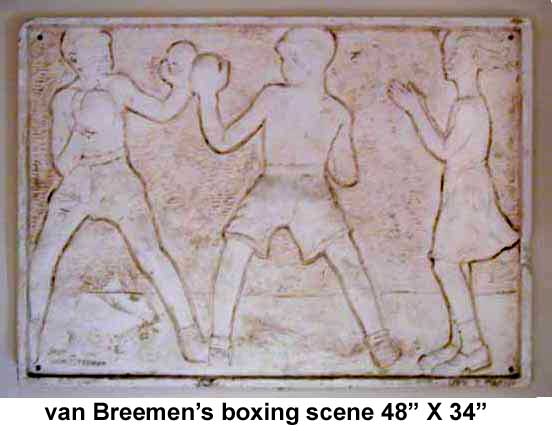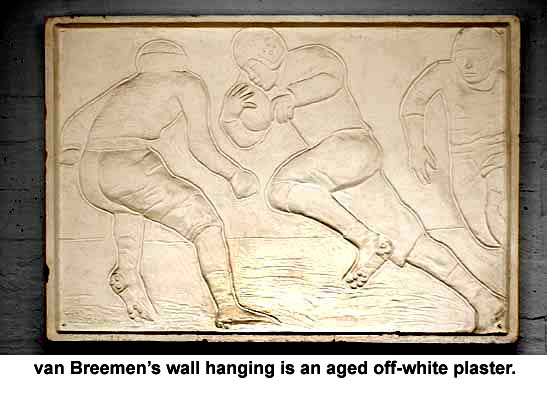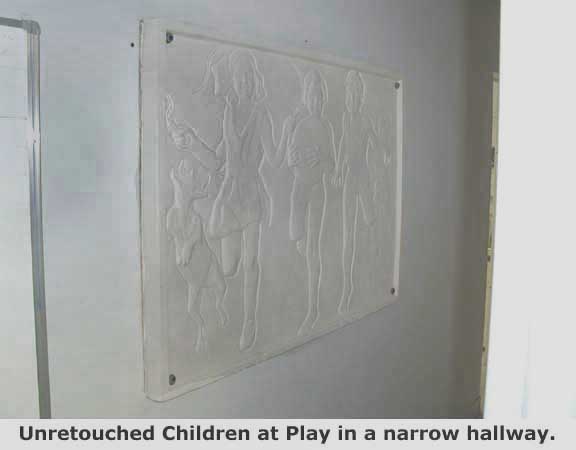|
The WPA Federal Art Project
- INTRODUCTION - United States wide, the Federal Art Project existed in the forty-eight states. Its strongest outreach program was in art education for children. FAP maintained more than 100 community art centers across the nation, managed art programs, and held art exhibitions of works produced by children and adults. Under this program thousands of posters, prints, sculptures, paintings, drawings, and murals were produced, which were then, in turn, loaned to schools, libraries, galleries, and other institutions. These programs spawned a new awareness of and appreciation for American art and provided jobs for needy artists. World War II brought its demise as efforts were concentrated on the war effort; however, during its life an estimated number of artworks produced were: 2,566 murals, 17,744 sculptures, 108,099 easel paintings and 240,000 prints. The FAP had two goals: 1) To provide artworks for non-federal public buildings and 2) To provide jobs for unemployed artists on relief rolls. There were three types of FAP activities: 1) Production of works of art--easel division. This emphasized nationalism and the rediscovery of America in artwork subjects; mural division, where the focus was on works for public places with regional differences occurring e.g. Chicago for realistic American scenes, New York City for abstract murals, and California for an Oriental theme; sculpture, where artists were encouraged to work in less expensive materials; and graphic arts, which produced posters for the government. 2) Art education -- including the establishment of community art centers. Art centers as institutions devoted to community education rather than practical training were rare before FAP. By December 1936, there were 25 art centers in the south and west. The heart of the community art center was its educational program through classes for adults and children. Miami and Key West had active WPA community art centers. 3) Art research through the Index of American Design. The goal was to make an historical and pictorial record of the daily life of American people. They produced 20,000 index plates in six years of operation. Specific kind of designs studied included: textiles, glass, ceramics, copper, brass, to name a few and regional varieties such as the Shaker materials in New England. To qualify for work in FAP, artists had to meet the professional standards as artists, and also the relief requirements of their state WPA relief board. After being selected to be on the project, artists were reviewed periodically and could be removed from a project if their financial status changed or if their work was unsatisfactory. The FAP ended with the closing of the fiscal year on June 30,1943, when the government turned its attention towards the war efforts. Actually there had been two President Franklin Roosevelt government sponsored art projects before the August 29, 1935 inaugurated FAP. They were the Section of Painting and Sculpture and the Public Works of Art operated by the U.S. Department of Treasury. (The WPA also administered the Federal Writers Project which accomplished much the same for needy writers. It was directed by Henry Alsberg and administered by Ellen Woodward. U.S. One - Maine to Florida (1938, Modern Age Books, Inc. New York) was one of its works.) Not depicted are additional FAP work on the Hurricane Memorial by other FAP artists. John Klinkenberg did the bronze plaque installed just below the bas relief. Ceramist Adela Gisbet did the ceramic tiles for the cover of the crypt. General designers were Allie Mae Kitchens and Emigdio Reyes. To read about the Hurricane Memorial click HERE. 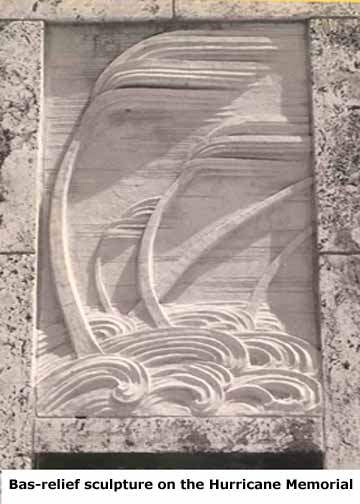 (Click to enlarge images) Joan van
Breemen's bas* relief sculptures were placed in 127 public schools,
libraries and public buildings according to one WPA document. Seven
each
were placed in the two Hurricane-Refuge schools constructed by the WPA
in the Upper Keys. Of the 14, nine remain in the Upper Keys. None are
named.
* BAS relief is a French term meaning "low-raised work." This art, along with high relief, is known collectively as relief sculpture-- meant to be seen primarily from one direction-- as opposed to 3-D sculpture which is in the round or full round. The untitled
piece below is (I call it baseball) in the Islamorada
Library at Mile Marker 81.5 on highway US 1.
The Breemen
work below has been restored (not accurately) and hangs
in the Harvey Government Center on Truman and White Streets in Key
West.
I call this one swinging. The originals had a natural plaster of paris
finishes according to WPA Project supervisor, A. J. (Jack) Little.
Installations
were complete in the Tavernier and Matecumbe School in August 1938.
Federal Art
Project (FAP) lists all of Joan van Breemen's pieces in
public buildings as "Children at Play." All the unrestored pieces are
basically
the same color and relief; however, my lack of photographic art ability
renders them here according to the color of the available light. The
FAP
list that I have also lists seven at each Upper Keys institution, six
being
48" x 34" and one 32" x 24". Six are at the Islamorada Library,
one
at the old Tavernier School, two at the Plantation Key Courthouse and
two
at the Harvey Government Center. Measurements that I have taken vary up
to 3/4 an inch from the stated. The one below I call tricycle.
Another of Children at Play that I call boxing. This one is in
the Islamorada
Library and the Plantation Key Courthouse. Still another Children at Play that I call football.
Regardless of the
colors they appear here, all are an aged version of an off-white
casting
plaster. This piece in the Islamorada Library appears to be a
non-standard size
- smaller and almost square. Note the theme is less playful. I call
this
one the globe. An unretouched photo of the van Breemen Children at Play in a
narrow
hallway of the Monroe County Health Department (old school house) in
Tavernier,
Florida. Photo with a Olympus 2020Z digital with built in flash October
31, 2000. To read about the Hurricane Memorial click HERE. |
